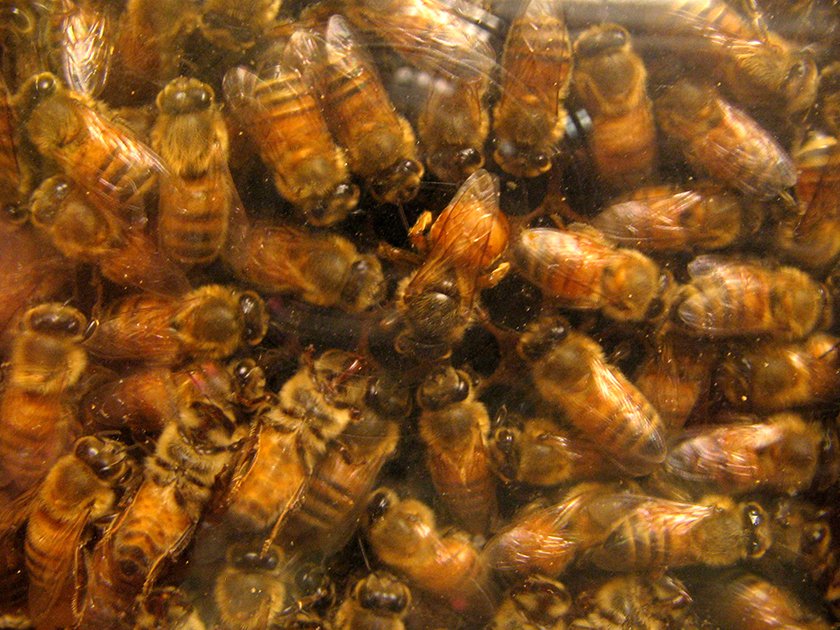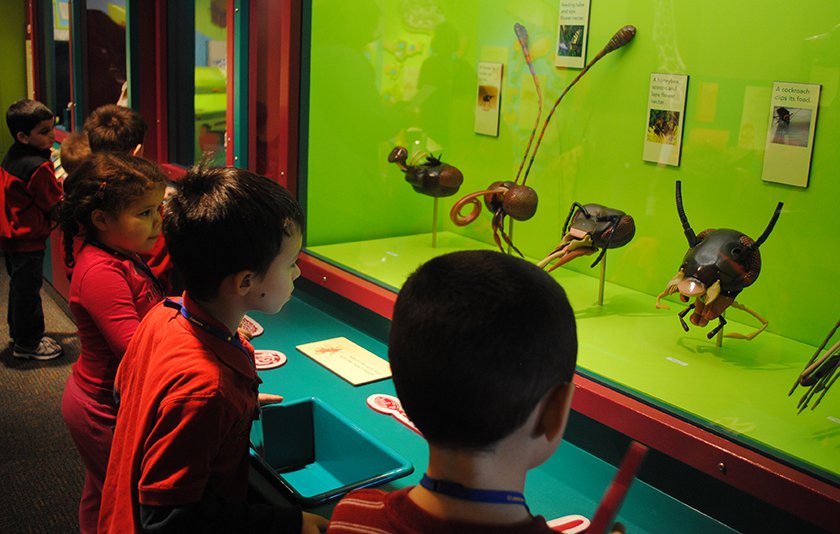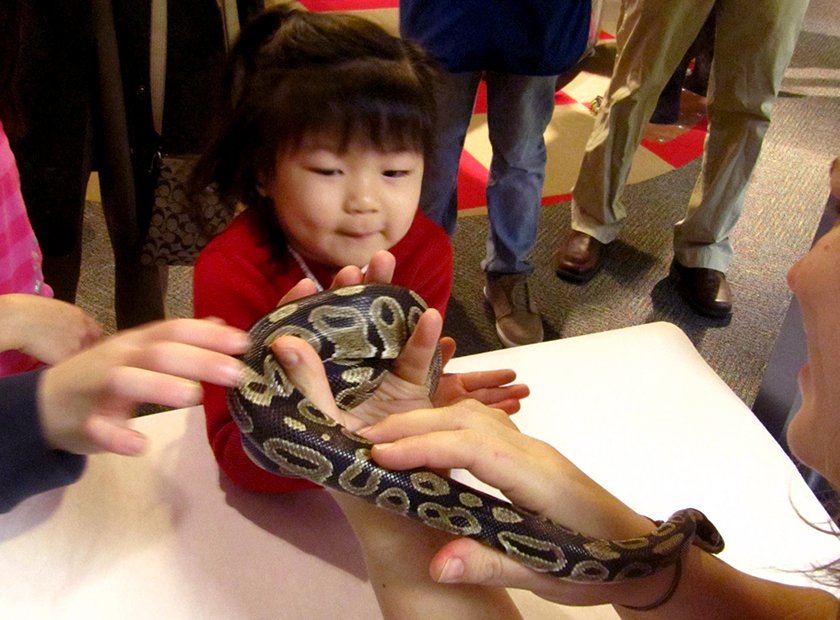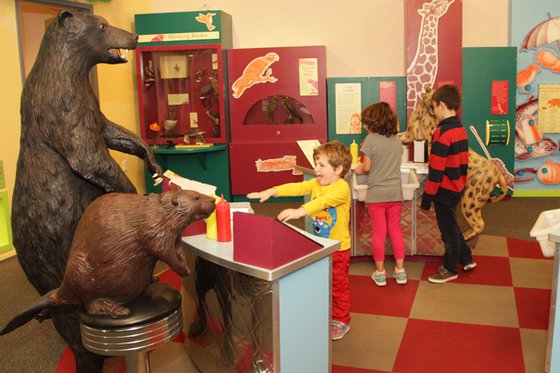All children eat. There are many ways animals -- including humans -- eat.
Through this exhibit, visitors compare and contrast animal eating habits and mouth anatomy through interpretive and interactive displays. They examine teeth, tongues and insect’s mouths as tools. Visitors discover the differences between Herbivores (animals that eat plants), Carnivores (animals that eat other animals) and Omnivores (animals that eat plants and animals).

Step into the Learning Studio at the back to the exhibit to view our Observation Beehive. Science lives, moves, changes and entertains as visitors observe our beehive throughout the year.

Visitors view mouthparts. Insect mouthparts are modified, paired appendages used to capture, manipulate and chew food. When visitors encounter new insects they have to decide if it is a “sucker” or a “chewer”.

Meet our live animals and see what they eat during their daily feedings. Our young visitors are drawn to live animals. Animals teach children about responsibility and empathy. Contact with animals is essential to understanding our place in nature.
What You Learn:
- Ecology
- Critical Thinking
- Observation skills
- Mouth anatomy
Continue the Fun at Home
Food is often a gateway to different cultures and a child’s own place in the natural world. Take a look around the grocery store to find new foods to taste. Make predictions about other animals’ eating habits in the wild, then look up the answers once you form theories.
Love the honey bees? Get the buzz all about bees.
